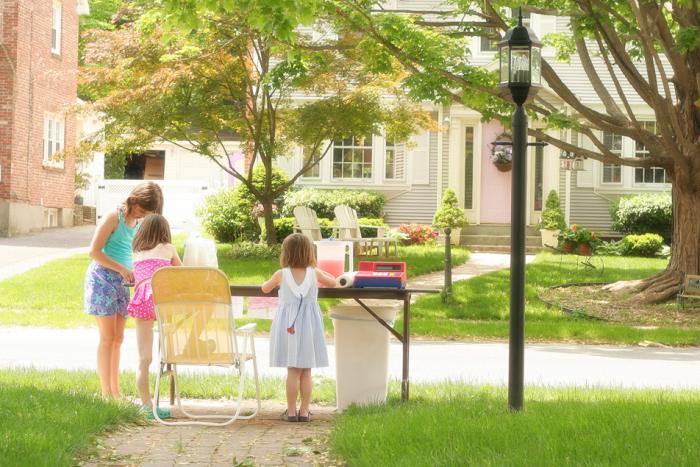A friend of mine, Kate, has spent most of the past year striving to be “clothing neutral.” In practice, this meant that Kate wore more or less the same outfit every single day: A zip-up wool sweater layered over a green cotton “Sustainable Resource Development” T-shirt, a pair of quick-dry khaki pants, and either chuck taylors or hiking boots depending on the weather. She owns multiple versions of the shirt (body odour neutrality was evidently also part of the goal), and, on one occasion when I visited her, I had the pleasure of seeing her retrieve from the dryer the only load of perfectly colour-sorted laundry I’ve witnessed.
Unlike some other “wear the same outfit every day” regimens I’ve heard of, Kate’s clothing neutrality wasn’t supposed to have an expiry date. It was a life decision—like eating more dense rye bread, or adopting one of those parrots that live a really long time—that could potentially continue indefinitely. The purpose was, I gathered, to become a bit freer, less attached to the materialism and status-consciousness that too often go along with getting dressed, and to be perceived differently: more like a person, less like a clothes rack.
I see Kate only very occasionally, when I pass through her city to visit relatives, and I admit I never noticed that she had reduced her wardrobe to one outfit. Kate has always worn a lot of greenish, resource-themed T-shirts. In fact, until she brought the subject up herself, I don’t think I thought about her clothes at all. This, I suppose, was the whole point.
The idea that a person could dress in a functionally invisible way—a sort of deliberate version of the Emperor’s new clothes, minus the humiliating nudity—intrigues me. I confess it’s a concept I associate most readily with discussions of “office-appropriate” clothing; whether that says more about me or the company dress codes I’ve been reading, I’m not sure. At work, the quest for the invisible outfit is, by and large, a woman thing. “You want the focus to be on your accomplishments, not your clothes,” the prototypical workplace orientation guide chirps with a hint of warning, and one senses it is not talking about loud ties on male executives. In the background, like an ominous chorus of busty, sequined ghosts, are the many cases of women who have been fired, allegedly for not sticking to this guideline precisely enough.
A few decades ago, “keeping the focus on you” might have meant donning a pant suit, à la Hillary Clinton (who, it must be noted, has managed to achieve a lot while rocking this uniform). Now it is more likely to mean wearing some sort of grey-scale skirt suit that manages to suggest cleavage without technically showing it, and matching mid-rise pumps that give a whiff of “hot stewardess” without actually forcing you to direct people to the emergency exits using hand gestures. But these kinds of outfits—over-tailored, leg-restricting, corporate, analogous to an insect’s exoskeleton—have always struck me as anything but invisible. Any woman who has met friends for after-work drinks while still wearing her day-job drag knows what I mean. It is nearly impossible to pee discretely in an alleyway while wearing a pencil skirt.
Obviously, context poses a problem for those attempting to dress invisibly at all times. The outfit that will let you blend in at the conference on transit planning is different from the outfit that will let you blend in at the dance club, the stampede, the law society mixer, the LARPing convention, the public library computer lab, or the nude beach. Like many people, I am most at home when I match the herd, and this is, paradoxically, the main reason I’ve never taken a decision like Kate’s. If Kate’s aim was to let her clothes become invisible by making them one with her person, then mine is to merge with my socially-determined environment like a conscientious colour-changing lizard.
The degree to which I prefer not to be singled out for my appearance has occasionally surprised me. A few years ago I took a trip to Spain, where I spent some of my time working on farms, and the rest of my time trying not to look like a tourist in the cities. On the farms, the prototypical woman looked something like this: long floral hippy skirts, the kind of deep tan that is in fact part dirt, and a full array of unwashed, unbrushed hair on every body surface that could conceivably support it. I couldn’t grow my leg hair out fast enough. But on arriving back in the city, suddenly surrounded by urbane, groomed women in swishy poly-blend outfits, I’d panic. Where was the nearest shower? Why hadn’t I brought any closed-toe shoes? Was it a problem that my razor had broken after shaving only one leg?
If both Kate and I were, in our equal and opposite ways, trying to make our fashion choices invisible, and possibly even be invisible, then what were we trying to hide? It’s a question I hadn’t really considered until a poem in Sonnet L’Abbé’s collection Killarnoe deftly presented an answer. With characteristic comedy, L’Abbé writes:
I’ve paid for too many degrees,
posited too many historical positions,
made too many semiotic apologetics,
forwarded far too many feminist responses
to too many textual materialities
to have an ass this big.
Of course! We were trying to hide our asses. This is the one thing that enlightened, unpretentious women (Kate), insecure and possibly pretentious women (me), and company dress codes everywhere have in common: an abiding fear of the female ass. You can hide it under quick-dry khakis, or you can hide it in plain sight, under whatever spandexy layer is fashionable at the moment, or you can get a lot of degrees in the hopes that people will start looking up. But, unfortunately, it doesn’t ever really go away. You can wear a burka and it doesn’t go away. L’Abbé is writing about brown asses—the poem is called “Theory, My Natural Brown Ass”—but I feel her observation can be made relevant to asses of various hues and formats. They’re all socially inconvenient.
“Mirror fasting” is a solution that’s been proposed a lot lately in the media. The gist of it is that a woman decides to go for a period of time (three days, five weeks) without looking into any reflective surfaces, thereby achieving freedom from the tyranny of her own image. But this is (almost literally) a head-in-the-sand approach. Anyone insecure enough to benefit from a mirror fast—and there are probably plenty of us—is also, in all likelihood, intelligent enough to realize that other people are still looking, thereby demolishing any psychological gain.
Incidentally, Killarnoe makes a pretty good blindfold. The cover is black and, with a few careful scissor cuts, could achieve a sort of Eyes Wide Shut effect, minus the eye holes. Simply open to a page of your choice and rest on the nose of the person you’d prefer didn’t witness your clothing choice. Fasten with a ribbon.
--
Photo by randomplaces






